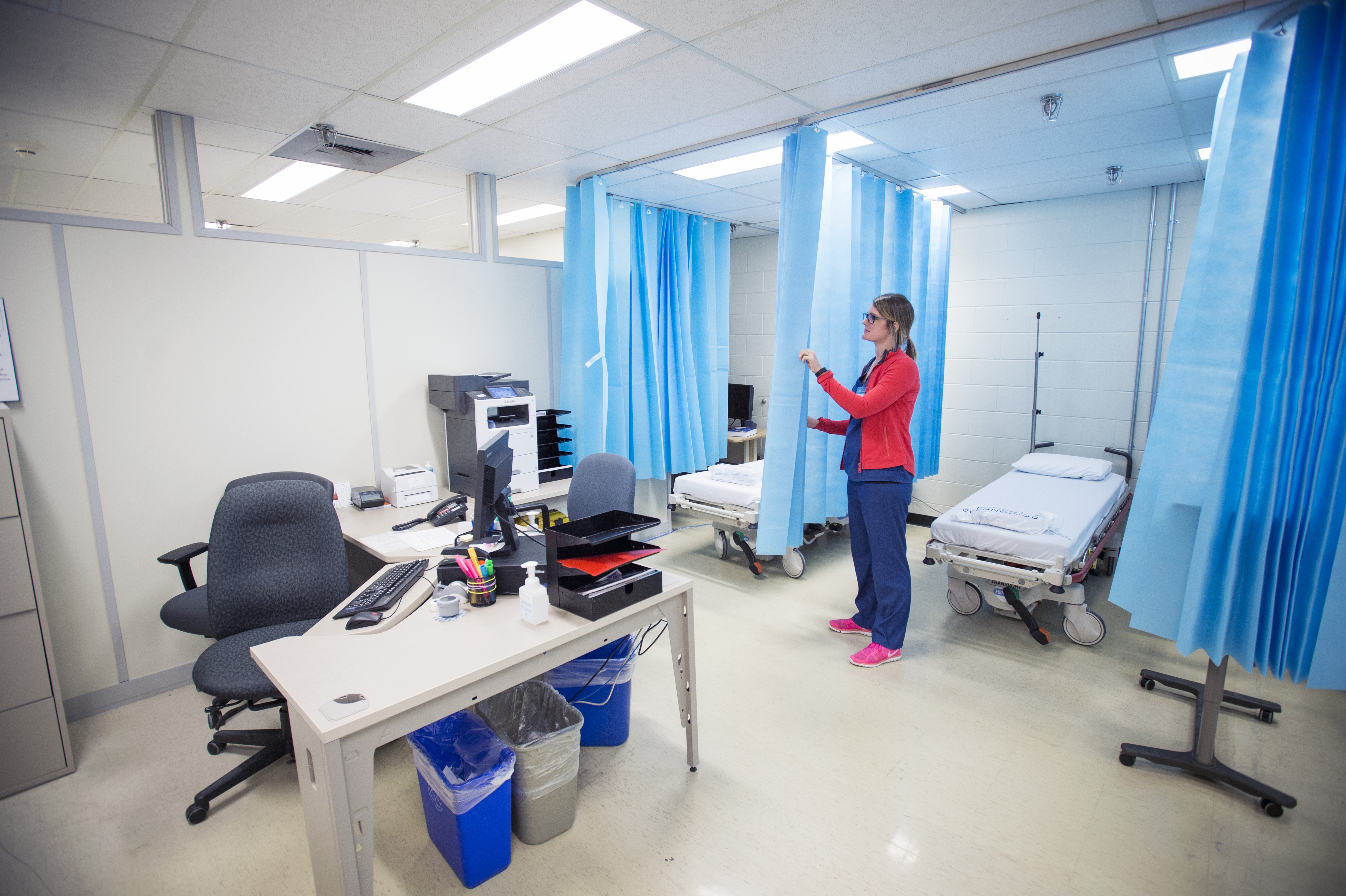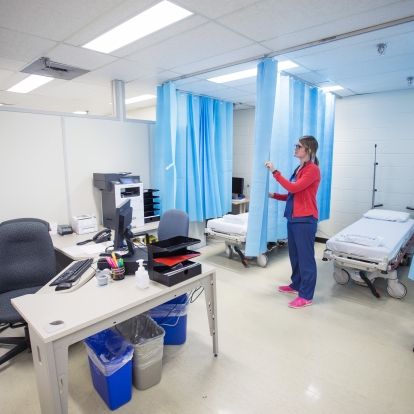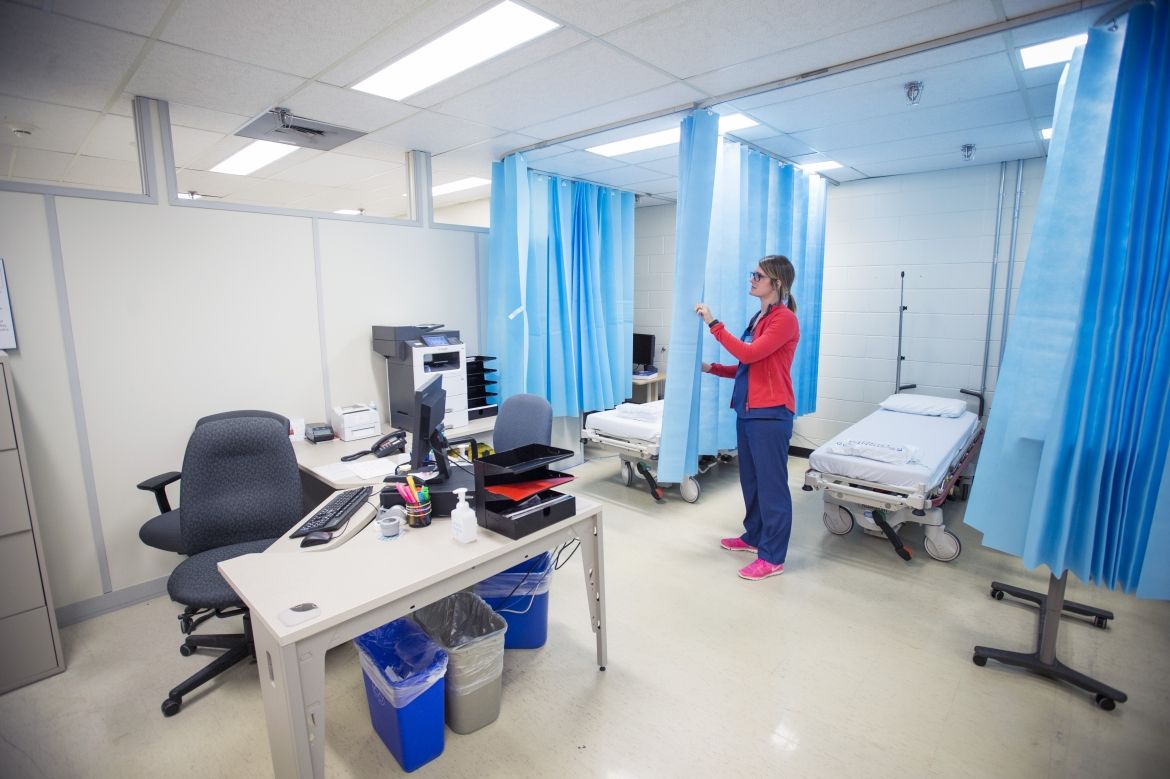Effective immediately masking is required for everyone when present on all inpatient units, in the Emergency Department (ED), the Urgent Care Centre (UCC), and the Children’s Outpatient Centre (COPC).

The Diagnostic Imaging department said goodbye to its big film library a while ago and that’s created an opportunity for the department to create a new patient care area.
It’s a space where outpatients are prepared for procedures done in the imaging department and where they can be cared for afterwards if needed. The room features six stretchers that are overseen each day by Registered Nurses. It also has all the supplies the RNs need.
“We have been looking at using this space for quite some time so it’s great we are finally able to try out this idea,” says Kelly Bodie, Manager of Imaging Services. “We expect having a dedicated area for imaging patients will speed things up and improve the overall patient experience.”
Up until now, the imaging department had beds set aside for use in the Outpatient Procedure Unit (OPPU). But over the past few years, that area has become busy with admitted patients. As a result, imaging patients and their families would often be put in other nearby areas to recover instead.
“It could be a bit like a travelling road show. If the OPPU was full, we’d have to look for our patients in other spaces which could be confusing and time consuming for everyone,” says Monica Myers, RN. “This situation is a big improvement as everything we need is now centralized.”
Each day, the DI department carries out hundreds of procedures. For most of these outpatient procedures, a recovery bed isn’t required. But about a dozen or so patients each day will need a bed in the unit to rest and recover before they can go home. As an example, patients who have lung biopsies need to stay for a while, as they require follow up chest x-rays to make sure everything is OK before they are discharged.
“Having all of these recovery stretchers in one area allows us to keep a close eye on all of our patients and also helps us improve flow through our department,” says Bodie. “Overall, having an efficient imaging system is very important. We are aiming to support patients in getting their diagnosis as quickly as possible so they can start their potentially life-saving treatments sooner.”
Having RNs handy in the unit will also improve safety as they are well placed to quickly respond when a patient needs emergency medical assistance in any of the procedure rooms. This could include a new IV start or some pain relief.
As part of the pilot, some minor construction will soon be wrapped up in the space. Next up will be to scope out some bigger construction projects, such as adding new air handling systems and work to improve the look of the space.
Gallery


Jessa Rego, RN, prepares two of the six stations for patients.



